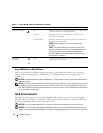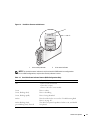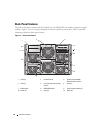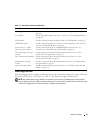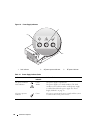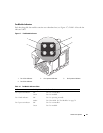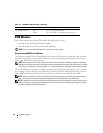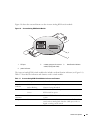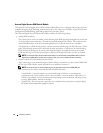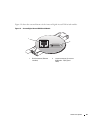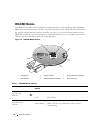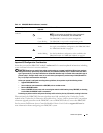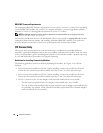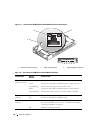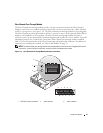
24 About Your System
Avocent Digital Access KVM Switch Module
The optional Avocent Digital Access KVM switch module allows you to configure and manage the server
modules through a single keyboard, monitor and mouse. You select server modules using the On-Screen
Configuration and Reporting (OSCAR) graphical user interface (GUI).
The Avocent Digital Access KVM switch module includes the following features:
• Analog KVM switching
This switch can be used as an Analog switch, allowing local KVM switching through direct connection
of a keyboard, monitor and mouse; or tiered into external analog KVM switches. This switch uses the
same OSCAR interface as the Avocent Analog KVM switch to switch between server modules.
The Digital Access KVM switch provides a custom connector which brings out PS2/video ports. These
ports can be directly connected to a keyboard, monitor, and mouse, or tiered into an external analog
KVM switch with KVM ports. If you are connecting the Digital Access KVM switch to an external
KVM switch using Cat5 connectors/ACI ports, that switch’s dongle (PS2/video to Cat5) is required.
NOTE: The Avocent Digital Access KVM module differs from the Avocent Analog KVM module in that the
Digital Access KVM switch module does not have an ACI port; it has an Ethernet network interface.
• Remote control of Virtual Media and virtual KVM
After connecting to your network using the switch’s Ethernet connection, use the system’s DRAC/MC
GUI to select Media and/or console and which server module to connect to.
NOTE: You must connect the switch’s Ethernet port into the same network as the DRAC/MC port.
You can then use the switch’s Virtual Media and virtual KVM features:
– Virtual Media – Using this feature, you can remotely map local drives on a management
workstation to the server module, or boot a server module to a remote diskette, optical drive, or
USB key. For example, you can remotely perform operating system installation, operating system
recovery, BIOS updates, and other functions.
– Virtual KVM – You can remotely control the server modules from any location, using the digital
KVM and an OS-independent graphical console.



